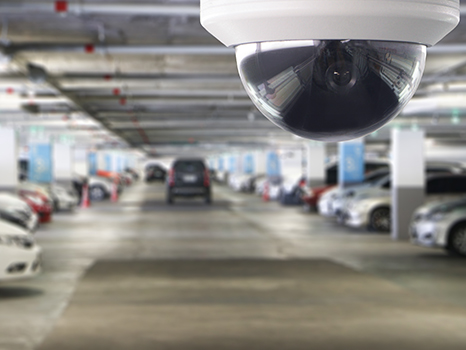Our Services:
-
Home Surveillance Camera Installation: Protect your loved ones and property with our expert Home Surveillance Camera Installation service. We'll help you choose the right cameras and strategically place them for maximum coverage.
-
Business Surveillance Camera Installation: Safeguard your business assets with our tailored surveillance solutions. We understand the unique security needs of businesses and offer Video Surveillance Installation Company services that are second to none.
-
Security Surveillance System Installation: Our Security Surveillance System Installation services are designed to give you complete control over your property's safety. Monitor your premises in real-time, review footage, and receive alerts when suspicious activity is detected.
Don't leave your safety to chance. Trust Spy vs Spy for all your Surveillance Camera Installation needs. Contact us today to schedule a consultation and take the first step towards a more secure future for your home or business.
Request a quote
Unveil a Safer Tomorrow with Spy vs Spy's Surveillance Expertise
Evolution of Surveillance Cameras:
Surveillance cameras have a rich history that can be traced back to as early as 1927, when a Russian physicist demonstrated the concept of transmitting images via shortwave technology. This demonstration involved a manually operated scanning transmitting camera, which marked the beginning of Surveillance Cameras. However, it would take several decades for Surveillance Cameras to become more widespread and technologically advanced.
Fast forward to the late 20th century, specifically December of 1996, where our story at Ok Communications, operating as Spy vs Spy, begins to unfold. At that time, we faced a common problem in many businesses – staff theft. To address this issue, we decided to experiment with Surveillance Cameras by introducing pinhole cameras within our business premises. These pinhole cameras were strategically positioned to monitor key locations, and their feeds were connected to a VCR recorder.
The beauty of this setup was its simplicity. After an incident occurred, we could easily review the recorded video footage to identify the individuals responsible for theft and misconduct. It was a powerful solution that allowed us to take the necessary actions to secure our business.
The Birth of Spy vs Spy:
Our successful experience with implementing Surveillance Technology sparked an idea. We realized that there were numerous other applications for this technology that could benefit individuals and businesses alike. This realization served as the foundation for Spy vs Spy, a venture dedicated to helping others leverage Surveillance Technology for various purposes.
Technological Advancements:
Since the mid to late 1990s, Surveillance Technology has undergone significant advancements. Notably, the introduction of Digital Video Recording (DVR) revolutionized the industry. DVR systems allowed for the storage of digital video data on hard drives, making it easier to manage and access recorded footage. Additionally, remote access to Surveillance Systems via computers opened up new possibilities. Customers could now view live footage from their Surveillance Cameras on their computers, even from remote locations.
However, one of the most game-changing advancements came with the integration of Surveillance Technology with cellular phones. This innovation allowed users to remotely access their Surveillance Systems via mobile devices, providing real-time monitoring and alerts. This shift in technology transformed Surveillance from a passive tool into an active and immediate security solution.
Request a quote
Diversity of Surveillance Cameras:
In today's marketplace, Surveillance Cameras come in a wide array of shapes, sizes, and technologies. Two primary types dominate the market: analog cameras and IP cameras (Internet Protocol cameras).
-
Analog Cameras
These cameras remain relevant due to their exceptional resolution, which can rival that of digital cameras. Analog Cameras convert the data they capture to digital format within the Digital Video Recorder (DVR), where it is then stored on a hard drive. One significant advantage of Analog Cameras is their cost-effectiveness compared to their digital counterparts.
-
IP Cameras
IP Cameras capture data digitally from the image sensor and transmit it as digital data. They can be connected directly to the internet, as the data they produce is already in digital format. IP Cameras are often the first to receive the latest technological features and innovations. They can also feature edge recording, which involves adding a memory card to the camera's PCB to record directly onto it, bypassing the need for a Digital Video Recorder (DVR). While these memory cards have limited capacity compared to a Network Video Recorder (NVR), they offer a quick and convenient solution for capturing events in real time.
-
Advanced Features and Analytics
Modern Surveillance Cameras are not just passive recording devices; they are equipped with advanced features and analytics that enhance their functionality. For instance, many IP Cameras now have built-in analytics for specific tasks, such as object classification. This technology can identify whether the movement in the camera's field of view is human or vehicle-related versus other objects. These object identifications can be programmed to trigger specific actions, such as sending instant alerts to your smartphone if a human presence is detected within the camera's field of view.
-
Beyond Security
Surveillance Cameras have evolved beyond being mere security tools. They now serve as management tools and even advertising mediums. Businesses can use Surveillance Cameras to monitor operations, track customer behavior, and optimize their processes. Additionally, some businesses use Surveillance Systems for marketing purposes, displaying live feeds on screens to engage customers or showcase their products and services.
Request a quote








